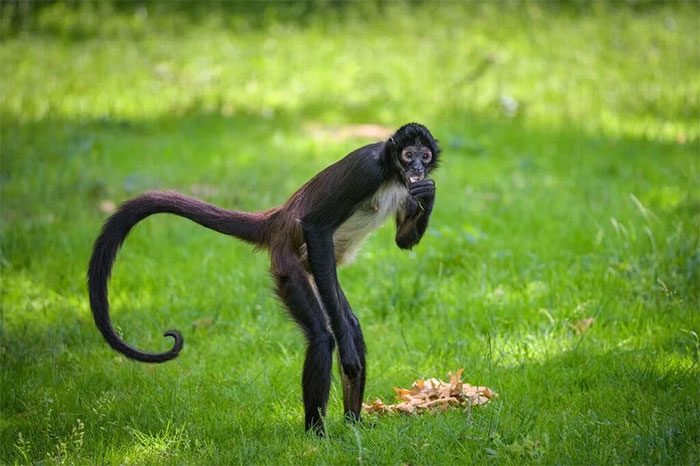Many higher animal species have tails. Horses use their tails to swat away flies, while birds have tails for navigation during flight. But what about us? Why do humans not have tails?
According to Howstuffworks, there are several scientific explanations for why humans walk without a swaying tail.
Unlike four-legged animals—like cats—that use their tails for balance, humans walk on two legs and employ a different system to avoid falling. Our gravity runs down our spine, and we do not need an additional appendage to balance the considerable weight of our heads.

Humans no longer need tails for survival.
We also do not need a tail to anchor ourselves on branches or swing from tree to tree in the forest, as other primate species do (although it would certainly be interesting if we could do that).
Moreover, humans no longer need tails for survival. So, did we once have tails? The answer is yes. And in some respects, we still do. Each of us has a series of fused vertebrae at the end of our spine, known as the coccyx, which is a remnant from the days when our ancestors had tails.
In other primate species, the coccyx leads to a fully developed tail. Humans also grow a tail bud during about the first 30 days of development in the womb, but this appendage often regresses before birth.
Geneticist Miriam Konkel at Clemson University (USA) notes that the loss of the tail may have been random, but it could also provide significant evolutionary advantages.

Many primate species still have tails today. (Photo: Alamy).
Regarding the aforementioned evolutionary advantages, several interesting hypotheses have been proposed. Some suggest that the absence of a tail has helped humans learn to walk upright.
According to paleoanthropologist Rick Potts, the lack of a tail may have been an initial step for hominins in moving towards an upright walking posture. Perhaps before transitioning to terrestrial living, they had already learned this way of walking.
Today, not all hominins live on the ground. For example, orangutans and gibbons still live in the trees.
Biologist Itai Yanai at New York University (USA), a co-author of the study, states that the loss of the tail is clearly a significant transition in the evolutionary process. However, current science has yet to clarify this issue.
Mr. Yanai jokingly remarked that the only way to truly understand the reason would be to invent a time machine to travel back to the past for answers.
In extremely rare cases, some children are born with actual tails. This is a reversion trait—a characteristic of ancient ancestors that randomly reappears. Typically, these tails are only a few centimeters long and are surgically removed shortly after birth without impacting the child’s health later on.



















































